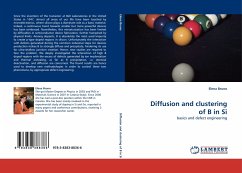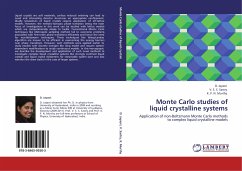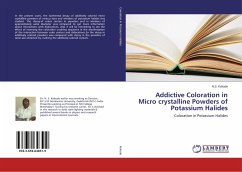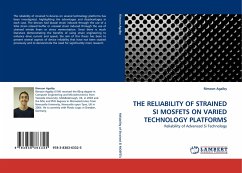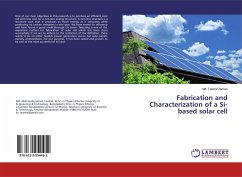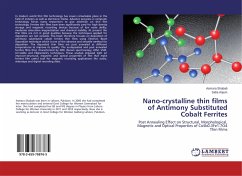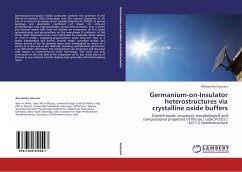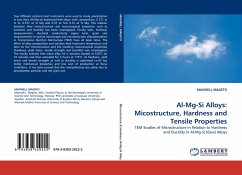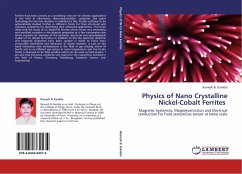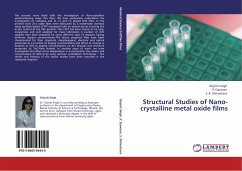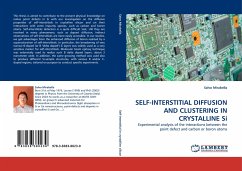
SELF-INTERSTITIAL DIFFUSION AND CLUSTERING IN CRYSTALLINE Si
Experimental analysis of the interactions between the point defect and carbon or boron atoms
Versandkostenfrei!
Versandfertig in 6-10 Tagen
52,99 €
inkl. MwSt.

PAYBACK Punkte
26 °P sammeln!
This thesis is aimed to contribute to the present physical knowledge on native point defects in Si with our investigation on the diffusive properties of self-interstitials in crystalline silicon and on their interactions with some impurity species, such as carbon and boron atoms. Self-interstitials detection is a quite difficult task, still they are involved in many phenomena, such as dopant diffusion, indirect observations of self-interstitials are more easily accessible. In our studies, we got advantages from the enhanced diffusion of boron realized by a supersaturation of self-interstitials...
This thesis is aimed to contribute to the present physical knowledge on native point defects in Si with our investigation on the diffusive properties of self-interstitials in crystalline silicon and on their interactions with some impurity species, such as carbon and boron atoms. Self-interstitials detection is a quite difficult task, still they are involved in many phenomena, such as dopant diffusion, indirect observations of self-interstitials are more easily accessible. In our studies, we got advantages from the enhanced diffusion of boron realized by a supersaturation of self-interstitials. In particular, the broadening of very narrow B-doped (or B "delta doped") Si layers was widely used as a very sensitive marker for self-interstitials. Molecular beam epitaxy technique was extensively used to realize such B delta doped layers, about 3 nanometer wide. In addition, the same growing method was used also to produce different Si-sample structures, with various B and/or C- doped regions, tailored on purpose to conduct specific experiments.



